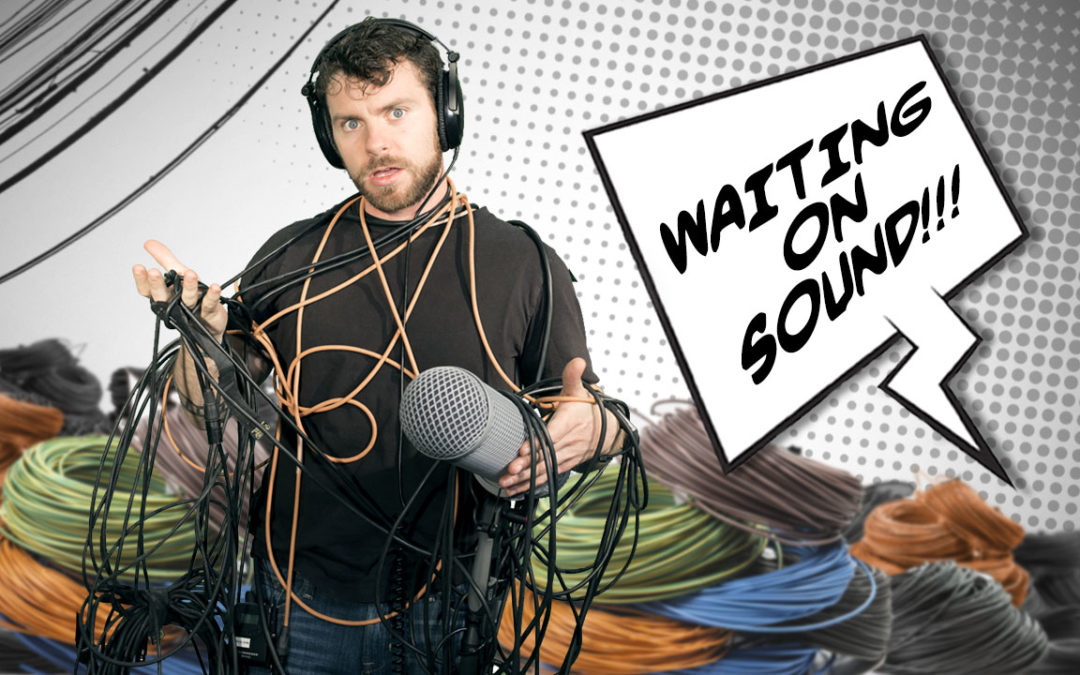Audiences can be very forgiving when it comes to indies. Poor picture quality, shaky camerawork, amateur performances… almost anything can be overcome by a talented filmmaker with a compelling story. But one aspect that ironically costs the least can also impact audiences the most.
Sound.
Nothing makes a movie feel more amateurish than bad sound. In fact, it has a negative ripple effect across the entire production, hurting performances, camerawork, editing, and so on. Yet the sound department is almost always the first to be overlooked on set and short changed in post.
Despite many incredible advances in technology, most sound issues cannot be fully corrected in the editing or mixing phase. DON’T FALL INTO THIS TRAP. Allocate an appropriate amount of of time and money to record great sound. You won’t regret it.
Here are five tips to improve the overall sound of your production:
1. Don’t hire one person to Boom and Zoom
Your sound department should be comprised of at least two people, a sound mixer and a boom operator. If one person is doing all your production sound, they won’t be able to quickly and capably adjust to any problems that arise on set. Particularly on an indie film, where rehearsals are rare and shooting moves quickly, an industry standard two person crew should mitigate most sound issues you’ll encounter.
2. Your budget should include gear
You get what you pay for. Whatever your budget range, you need to allocate fair rates for your sound team including their time and gear! Most film departments have kit or rental fees. Sound is no exception. You’ll need to pay to use the mixer and microphones in the same way you’d rent the camera and lens packages. Again, a relatively small investment here will pay big dividends with audiences.
“You can have funky images, it can be shaky, and focus can be off, but the sound has to be of a quality that makes the film watchable.” – Janet Pierson, SXSW Director of Film
3. Meet with your ENTIRE sound team early
Rather than throw them to the wolves on day one, meet with your sound team early and include them on your tech scouts. This will help them anticipate and prepare for issues that might arise during shooting and allow them to make suggestions for better sounding locations. A trained and experienced sound person will be better able to recognize potential problems and, more importantly, brainstorm solutions. It will also help them (and you) be prepared for the workflow when the project moves into post.
4. Check in regularly with your crew while filming
After every take, your AD will typically ask the DP, “How did that look?” But was anyone paying attention to the 747 flying overhead in the middle of the emotional scene? That’s the soundie’s job. Check in with them regularly to make sure you’re getting what you need. Do you need a safety take because of some recording interference? Was the dialogue distorted when the actor yelled unexpectedly? Do you need to capture some wild lines between setups? These are important questions to ask your team throughout the day. Otherwise you end up trying to fix it in post, costing you time and money.
5. Include post production sound in your budget
You know you’ll need time and money to picture edit your film, but don’t forget that half of the post process is devoted to the sound edit and mix. You can expect a day rate for a sound editor to be similar to that of an on set mixer, so don’t forget to budget for it. And know that for most indie features, the sound supervisor will hire additional editors to help with the design.
Something to also keep in mind when planning for post is that the most expensive part of sound is mixing or “dubbing.” Those mix stages are not cheap. Plan accordingly. Just like with color grading, there is a vast difference between a dilettante technician mixing on their laptop and a pro using a full “board” on a stage. If you’re serious about your art, scratch together enough money to get the job done right.

